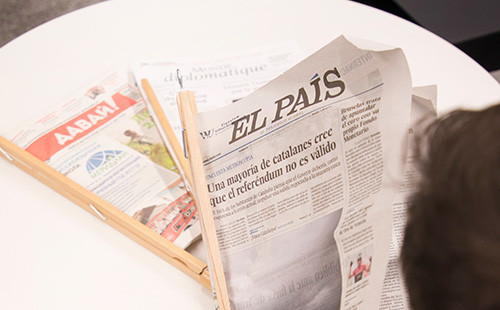Commuters willing to pay more for shorter travel times when driving
On average, Austrians spend over an hour a day commuting. In her current research, WU transport economist Stefanie Peer investigates how commuters make mobility-related decisions, especially with regard to choice of transport mode and arrival time. Her results showed that Austrians are more willing to pay for reduced travel times when travelling by car than with public transportation.
Stefanie Peer, a researcher at WU’s Institute for Multi-Level Governance and Development, investigated in several studies how travel times are valued based on different modes of transportation (private car, rail, local public transportation, bicycle, walking), time-related aspects (short- or long-term), and different groups of people. The main focus was on travel time. “Valuation shows what people are prepared to pay to reduce travel time, giving them more time for other activities. Current studies show that when travelling conditions are comfortable, people are less inclined to pay more for shorter travel times than when conditions are uncomfortable,” says Peer.
Public transportation: More comfort, lower motivation to pay more
For her research, Peer utilized data that represents individual decision-making with regard to mobility, like surveys or cellular GPS records. She also gathered data from experiments using both hypothetical decisions and real-life situations in which subjects were offered incentives to change their mobility habits. Based on this data, Peer developed econometric models to explain the mobility behavior she observed. Unlike previous studies, Peer’s research showed that Austrians are willing to pay more for shorter travelling times when driving, as compared to travelling by public transportation. “This leads to the conclusion that if travelling times are the same, people prefer to spend time in public transportation rather than a car. This observation applies to all segments of the population, regardless of age, gender, or income level,” says Peer. These findings reflect the high quality of public transportation and the fact that using public transportation allows travelers more opportunities to use travelling time productively and comfortably by working on their laptops, smartphones, etc. Peer’s studies also show that travelling time is given more weight in long-term mobility decisions than in situational, on-the-spot decisions made at departure time. This is probably because the time freed up by regularly selecting modes with a shorter travelling time can be better planned and used than the extra time resulting from short-term decisions.
Important basis for transportation policy decisions
Valuations of travel time and travel comfort are deciding factors in determining whether investments in infrastructure projects and other transportation policy measures make economic sense. “In this type of cost-benefit analysis, valuations of travel time and comfort are consulted on the one hand to determine the monetary value of travel time and comfort, and on the other hand to make predictions about how changes in these factors will affect user numbers, or in other words, demand for services,” explains Peer. “Our research results show that these valuations depend, among other factors, on the type of transportation mode and the time aspect, and need to be used in a context-specific manner in cost-benefit analyses.” The transport economist criticizes the fact that this need for context is rarely addressed in practice, which can lead to a distortion in the results of cost-benefit analyses.
The studies:
Evidence from a revealed-preference experiment among peak-hour road commuters.

Pressekontakt:
Mag. Anna Maria Schwendinger
PR-Referentin
Tel: + 43-1-31336-5478
Mail: anna.schwendinger@wu.ac.at
